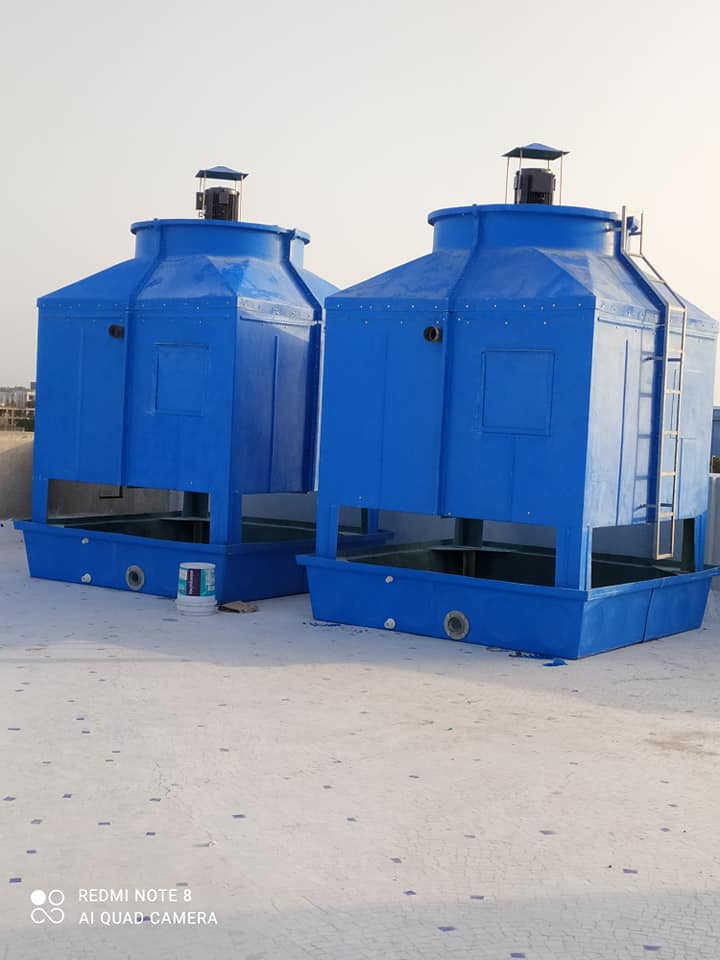| Types of Factories Assembled Cooling Towers 1. Induced Draft vs. Forced Draft Feature Induced Draft FAP Forced Draft FAP Fan Position Top (pulls air) Bottom (pushes air) Efficiency Higher (less recirculation) Lower (fan works against pressure) Noise Level Quieter (fan inside tower) Louder (fan exposed) Maintenance Easier (accessible fan) Harder (fan in wet zone) 2. Crossflow vs. Counterflow Feature Crossflow FAP Counterflow FAP Air-Water Flow Air horizontal, water down Air up, water down Footprint Larger (but lower height) More compact (taller) Energy Use Lower (gravity-fed) Higher (pressurized spray) Maintenance Easier (open structure) More complex (fill access) 3. Open vs. Closed-Circuit (Hybrid) FAP Open FAP: Direct evaporative cooling (water exposed to air).Closed-Circuit FAP: Uses a heat exchanger (cooling fluid stays isolated). Advantages of Factory Assembled Cooling Towers ◉ Faster Installation – No need for on-site fabrication. ◉ Cost-Effective – Lower labour and construction costs. ◉ Quality Control – Factory testing ensures reliability. ◉ Scalability – Modular designs allow for expansion. ◉ Space-Saving – Compact compared to field-erected towers. Disadvantages ◉ Limited Customization – Fixed designs may not suit all needs. ◉ Size Restrictions – Not ideal for very large industrial applications. Applications of FAP Cooling Towers HVAC Systems (office buildings, hospitals, malls). Data Centres (critical cooling for servers).Industrial Processes (plastics, food processing, chemicals). Power Plants (small to medium-scale auxiliary cooling). Selection Criteria for FAP Cooling Towers Cooling Capacity (tons of refrigeration required). Space Availability (rooftop vs. ground installation). Water Quality & Treatment Needs (scale, corrosion prevention). Energy Efficiency (EC motors, VFDs, fan type). Climate Conditions (dry vs. humid environments). Noise Restrictions (urban areas may require low-noise models). |
Cooling Tower Manufacturer in Qatar
